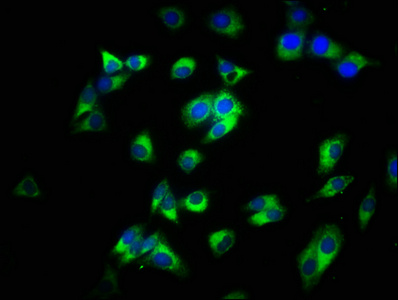![FACS analysis of human peripheral blood using GTX18271 CD14 antibody [MEM-15] (PE). FACS analysis of human peripheral blood using GTX18271 CD14 antibody [MEM-15] (PE).](https://www.genetex.com/upload/website/prouct_img/normal/GTX18271/GTX18271_20191028_FACS_1_w_23060620_463.webp)
FACS analysis of human peripheral blood using GTX18271 CD14 antibody [MEM-15] (PE).
CD14 antibody [MEM-15] (PE)
GTX18271
ApplicationsFlow Cytometry
Product group Antibodies
TargetCD14
Overview
- SupplierGeneTex
- Product NameCD14 antibody [MEM-15] (PE)
- Delivery Days Customer9
- Application Supplier NoteFACS: 20 microl reagent / 100 microl of whole blood or 106 cells in a suspension. *Optimal dilutions/concentrations should be determined by the researcher.Not tested in other applications.
- ApplicationsFlow Cytometry
- CertificationResearch Use Only
- ClonalityMonoclonal
- Clone IDMEM-15
- ConjugateRPE
- Gene ID929
- Target nameCD14
- Target descriptionCD14 molecule
- Target synonymsmonocyte differentiation antigen CD14, my23 antigen, myeloid cell-specific leucine-rich glycoprotein
- HostMouse
- IsotypeIgG1
- Protein IDP08571
- Protein NameMonocyte differentiation antigen CD14
- Scientific DescriptionThe protein encoded by this gene is a surface antigen that is preferentially expressed on monocytes/macrophages. It cooperates with other proteins to mediate the innate immune response to bacterial lipopolysaccharide. Alternative splicing results in multiple transcript variants encoding the same protein. [provided by RefSeq, Mar 2010]
- Storage Instruction2°C to 8°C
- UNSPSC12352203
References
- Internalization of Polymeric Bacterial Peptidoglycan Occurs through Either Actin or Dynamin Dependent Pathways. Popescu NI et al., 2022 Mar 3, MicroorganismsRead more



![FACS analysis of A549 cells using GTX17867 CD14 antibody [LPSR/2385]. Blue : Primary antibody Red : Isotype control](https://www.genetex.com/upload/website/prouct_img/normal/GTX17867/GTX17867_20200115_FACS_51_w_23060620_728.webp)
![FACS analysis of A549 cells using GTX17873 CD14 antibody [LPSR/2386]. Blue : Primary antibody Red : Isotype control](https://www.genetex.com/upload/website/prouct_img/normal/GTX17873/GTX17873_20200115_FACS_50_w_23060620_923.webp)
![IHC-P analysis of human tonsil tissue using GTX17876 CD14 antibody [LPSR/2408].](https://www.genetex.com/upload/website/prouct_img/normal/GTX17876/GTX17876_20200115_IHC-P_1286_w_23060620_304.webp)
![IHC-P analysis of human tonsil tissue using GTX18025 CD14 antibody [LPSR/2397].](https://www.genetex.com/upload/website/prouct_img/normal/GTX18025/GTX18025_20200115_IHC-P_1428_w_23060620_697.webp)
![FACS analysis of human peripheral blood leukocytes using GTX18274 CD14 antibody [MEM-18] (PE).](https://www.genetex.com/upload/website/prouct_img/normal/GTX18274/GTX18274_20191028_FACS_1_w_23060620_551.webp)